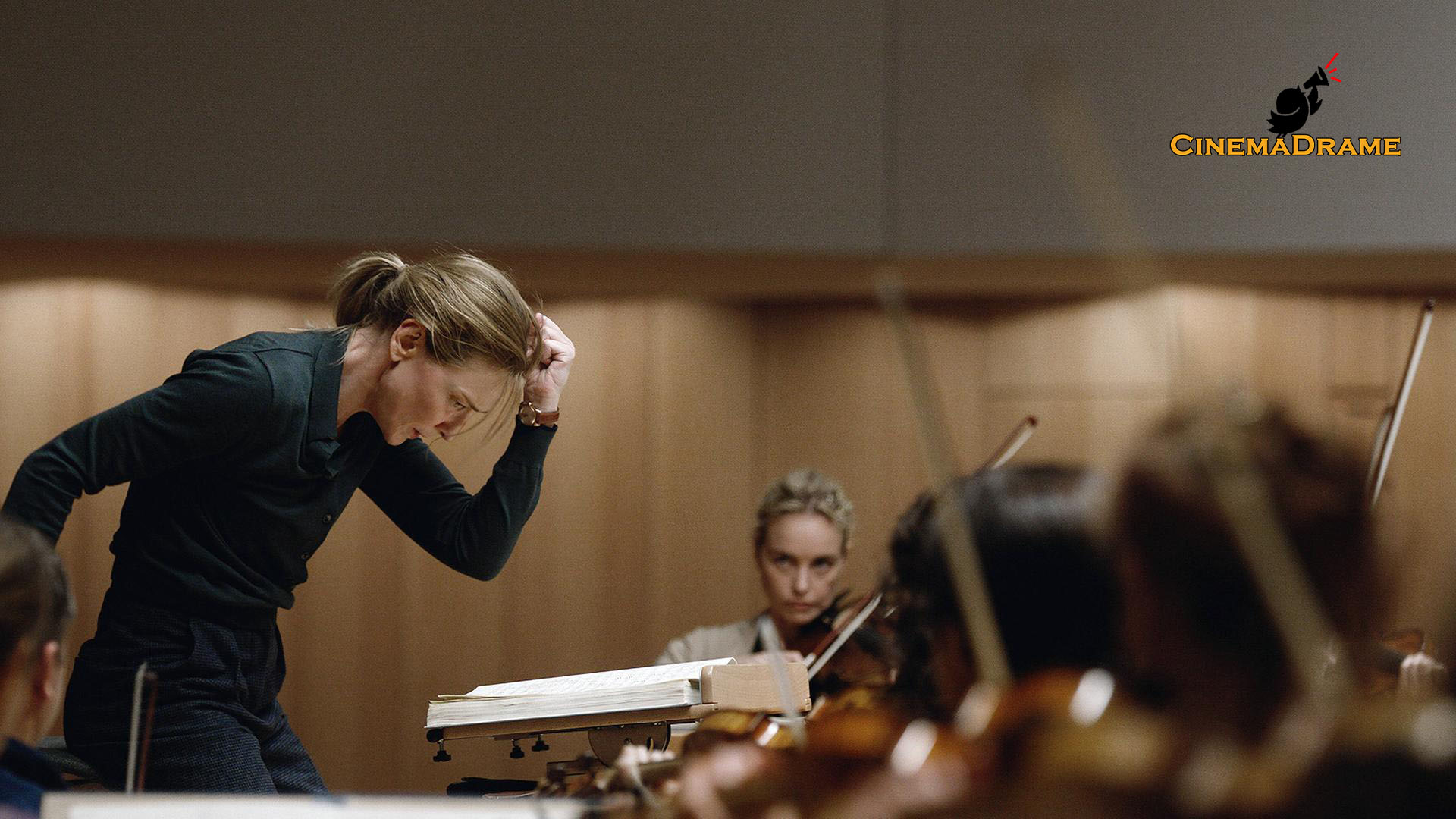Loghman Madayen, Film Critic, on Todd Field’s Tár: Tár and the Ruthless Cycle of Power!


According to cinemadrame News Agency, Loghman Madayen, a film critic, penned an exclusive note on the film Tár, writing: The film TÁR, written and directed by Todd Field and featuring an exceptional performance by Cate Blanchett, comes to show how ill-fitting a garment can be when tailored larger than what a person can carry. It demonstrates how positions of power only accommodate those who are of the same kind and share similar tendencies. It reveals how, in such high positions, individuals are used as tools and then easily discarded from the inner circle. It portrays how an authoritarian and totalitarian figure thrives as long as there is no public scrutiny, and as long as observers and witnesses stay silent out of fear for their own positions and interests.
It exposes how this figure views the masses who placed her on the pedestal—how, in a state of heightened delusion, she sees herself as the omniscient one and regards those she climbed upon as sheep in need of a shepherd. All the information presented about her to the audience is curated and filtered, indicating the fear that lurks within the hidden layers of her life. It alludes to the unseen global forces that wield immense power, capable of placing anyone on a throne and adorning them with a crown—only to later, once their utility is spent, turn their strengths into weaknesses and remove them from power using their own instruments.
It shows how a person in power justifies all entitlements for herself and refuses to acknowledge how her actions disrupt the peace of others. It emphasizes that her entire status hinges on one thing: the ignorance of the people. And the moment ignorance gives way to awareness, all her power and glory vanish. Ultimately, the film references the MeToo movement and attempts to provide an impartial judgment on its course.
The opening minutes of the film are exceptionally well-rendered. We quickly receive numerous signals about the character. Her condescending gaze toward subordinates is immediately evident; her sexual orientation is unveiled; the robe of power is tailored and fitted to her. Finally, selective information about her background is disseminated through media propaganda to convey that her rise has not been organic.

We are presented with a dual-layered screenplay. One layer is between Tár and the structures of power, and the other between Tár and those around her. The first turning point of the film begins when Tár, after a long hiatus, meets with Eliot, the director of the Kaplan Fund, in an upscale restaurant. There, in exchange for a generous bribe, she agrees to reveal the secret behind her astonishing performance at the Jewish concert. This marks the start of her downfall, as she enters a steep decline.
The film reaches its climax when Lydia is subjected to an intense media backlash and hidden truths about her life are exposed. Consequently, the Kaplan Fund seizes this opportunity and removes her from power.
The second turning point occurs when Eliot decides to replace Tár as the conductor of the Berlin concert, using a blueprint stolen from Lydia to usurp her performance. In a surprising scene, Tár confronts him with all her might in an attempt to expose him. After this event, everything resets, and Lydia becomes an ordinary orchestra conductor.
Lydia Tár is the film’s protagonist. Despite her unconventional and controversial lifestyle, she does not succumb to conformity, refuses to bribe, accepts herself as she is, and firmly believes in her talent. She attempts to pass by obstacles with indifference. However, the antagonist—Eliot—after discovering Tár’s great secret in the concert, aims to eliminate his rival, and ultimately succeeds.
A critical point in Lydia Tár’s fall is that, under Eliot’s influence, she eliminates those who genuinely love her. In essence, she severs her own roots with her own hands and eventually collapses with the slightest push. Her widespread popularity is replaced with disdain and hostility.
The planting, cultivation, and harvesting of the main characters are properly observed. Each character appears at least three times throughout the film, or is referenced.
Dialogue writing is weak. At the film’s beginning, the viewer is forced to endure a seven-minute dialogue between Lydia and a famous journalist—an overwhelming flood of information. The dialogues are expository, technical, and confusing, causing the viewer to lose the main narrative thread.
Throughout the film, Lydia represents an anti-value, exploiting those around her. However, by the end of the film, when she visits a massage center and witnesses the instrumentalization of individuals, she becomes disturbed. This signals her recognition of her own past manipulations and her victimization by Eliot.
Given the film’s dual-layered script, it employs two communication devices. In the first layer, the hidden treasure is Lydia’s notebook, stolen by Eliot. In the second, it’s the mobile phone, capable of broadcasting a video from Lydia’s masterclass session and accompanying emails, triggering a massive exposé and media storm, thereby jeopardizing her presence in New York.
The film contains strong elements of suspense—such as when the story swiftly moves past the masterclass incident and its surrounding controversies, despite their deeper dimensions. This includes the relationship between Lydia and her manager/partner, the challenges between Tár and Eliot, and the ongoing surprises each one delivers to the other.
The set and costume design align perfectly with the scenes and text and reflect an astute understanding of color psychology. The color palettes are accurate and intentional. Color and lighting are used to express Lydia and Sharon’s sexual orientation. In the initial conversation between Lydia and Eliot, a black-and-white palette is used: white indicating their perfectionism, and black suggesting wealth, power, and the hidden aspects of their personas.
At the start of the film, Lydia wears a green coat and a blue blouse. The green implies she is on a path of growth and dominance, while the blue signifies her high self-confidence. Sharon often wears white, symbolizing her honesty, purity, and authenticity in the relationship. In contrast, Lydia’s black attire reflects her selfishness, and the black clothing worn by Francesca and Olga suggests their hidden facets and unknown worlds.
The main storyline revolves around Lydia and Eliot, but the subplots are so powerful that they overshadow the main arc, causing the audience to lose sight of the central narrative. These subplots include the hidden relationship between Sebastian and Andris, Max’s bitter past, and Lydia’s relationships with Sharon and others.
The film’s découpage is flawed. Despite the high level of precision in the arrangement of scenes and shots, there are moments where the director loses control. Some incomplete or misleading sequences slow the film’s pace and disrupt its rhythm—evidence that the screenplay still needed refining.
The final music score does not suit the film, which is another weakness. However, the camera placement, lighting style, camera movements, framing, sound design, and the deliberate avoidance of unnecessary repeated shots are among the director’s strengths.
Cate Blanchett delivers an outstanding performance. All actors appear luminous. Their speech is fluid, their bodies relaxed, their performances deep and meaningful. Their voices and gestures align with the scenes and the text. They utilize aesthetic principles of bodily expression, delivering the right amount of energy per scene. Their vocal tone is sincere, their words articulated with authenticity. They grasp the meaning of the script and deliver it naturally. Their facial expressions are expressive, adding dimension to their characters. They internalize their roles and avoid repetitive acting patterns—in short, they capture the essence of the writer’s message.
The psychological profile of Lydia Tár follows the fifth stage of Erik Erikson’s identity development theory. Her identity is introduced via a long, exhausting narration, followed by a revelation of her hidden facets. Later, Lydia discloses personal details, pauses to rediscover herself, rebels against her previous norms, liberates herself, and eventually, in solitude, finds her true identity—where Sharon no longer contributes to her growth. Along the way, multiple Eriksonian stages—trust, intimacy, and detachment—are manifested.







